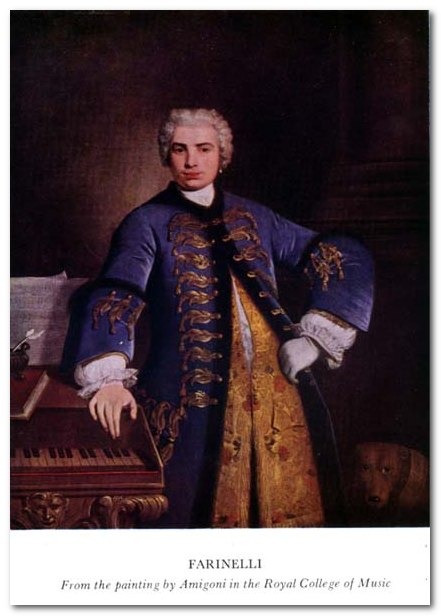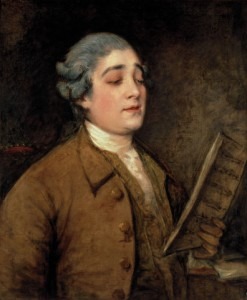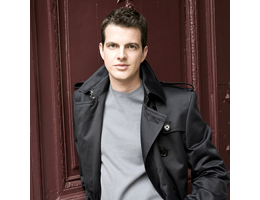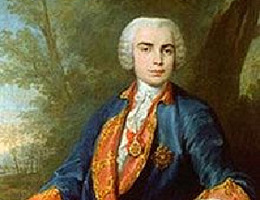
Farinelli
Credit: http://www.timurokutman.com/
Later, in the Baroque period, a very different high male voice was being cultivated in the opera house, where composers such as Handel and Hasse vied to write music for famous castrati such as Farinelli or Senesino. The procedure of cutting the blood supply to the genitalia, if undertaken before puberty, would prevent the larynx, or voice box, from lengthening and the voice from ‘breaking’ to a bass or tenor range. There were a number of resultant physiological differences, including very long limbs and indeed a shorter lifespan. But the most desired change was an expanded ribcage, which allowed castrati to develop an unbelievable breath capacity – Farinelli in particular was apparently able to sustain a single note for over a minute – as well as extraordinarily flexible voices. The composer and flautist Johann Joachim Quantz commented in 1726, on hearing Farinelli in Milan, that the singer’s range was from the A below middle C to the D two octaves above – an extraordinary range by any standards! Charles Burney helpfully left us an account of a performance by Farinelli:

Senesino
Credit: http://transsuccess.tumblr.com/
Their amazing feats lent the top castrati considerable fame and huge riches, with annual incomes of about £5000, an enormous sum at the time.
But this level of stardom was perhaps unsustainable, and as the Baroque era turned to the Classical, and a shift to Enlightenment values led to an acceptance of women in opera houses, the art of the female voice soon began to develop, and in his operas Mozart demanded great virtuosity and expression from his sopranos in such roles as the Countess in Figaro, Pamina and the Queen of the Night in The Magic Flute and, perhaps the most demanding of all, Fiordiligi in Cosi fan tutte. The rest is history – many of the most famous roles in all opera are for the soprano voice. So what happened to the countertenor? In my next article, we will look at the way that the high male voice rose again in 20th century art music, as well as looking at how its haunting sound has become an important part of today’s popular music.
French Countertenor Philippe Jaroussky will be performing at the coming French May Festival.
Perotin: ‘Alleluia nativitas’ (The Hilliard Ensemble)
Handel: ‘Lascia ch’io pianga’ from Rinaldo (Philippe Jaroussky)


